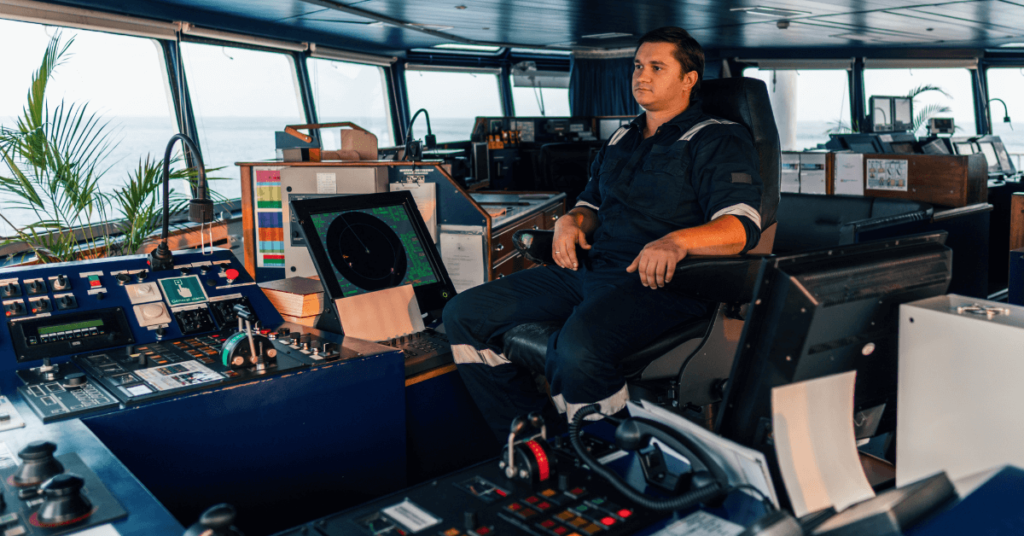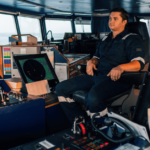What is Chain Register On Board Ships?
As we all are aware of the fact, safety is probably THE MOST important aspect at sea. While direct safety pertains to life and the manpower involved, the safety of the equipment also obviously correlates with the former. All machinery systems are subject to failure at some level and therefore, it is imperative to carry out and keep a record of tests and examination carried out on the myriad tools and types of machinery used onboard.
A record of the particulars of test and examination of lifting appliances, loose gear and heat (annealing) should be entered and maintained in the register of machinery, chains, wire ropes etc. called the Chain Register.
It is a blue coloured booklet also referred to as Form 99. The chain register is divided into three parts:
1. Part 1 – Initial and periodical load test of lifting appliances and their annual thorough examination
2. Part 2 – Initial and periodical load test of loose gear and their annual thorough examination
3. Annealing of chains, rings, hooks, shackles and swivels (other than those that are exempted)
The ones that are exempted are as follows:
A) Chains made of cast iron
B) Plate link chain
C) Chains, rings, hooks, shackles and swivels made of steel
D) Pulley blocks
E) Hooks and swivels having screw threaded parts or ball bearings
The tests, examinations and inspections included in the Register are based on the requirements of the ILO Convention No. 152 . The purpose of this is to ensure that the vessel’s lifting appliances are initially certified by a competent person and also to establish periodically that they continue to be in safe working order. Certificates shall be obtained from a competent person with respect to the tests and attached to the register.
No such appliances or gear shall be used for dock work unless the entries are made in the register along with the certificates of test and examination to supplement them are attached. Each and every cargo gear just be marked with their safe working load as per their certificate, conspicuously.
With respect to the testing of items such as chains, swivels etc., the term annealing has been mentioned before. Annealing is the process of heating and subsequent cooling to achieve ductility, softness and to relieve any internal stresses. The metal is heated to about 20-30 degrees above the critical point. After a while at this temperature, it is cooled slowly at a gradual rate.
To sum it all up, the safety of machinery and gear used onboard is directly related to the maintenance of a safe working practice onboard. As cumbersome as it may seem to keep documentation updated, testing of the gear that is used regularly will only add to the optimum performance of the vessel as a whole.
Disclaimer: The authors’ views expressed in this article do not necessarily reflect the views of Marine Insight. Data and charts, if used, in the article have been sourced from available information and have not been authenticated by any statutory authority. The author and Marine Insight do not claim it to be accurate nor accept any responsibility for the same. The views constitute only the opinions and do not constitute any guidelines or recommendation on any course of action to be followed by the reader.
The article or images cannot be reproduced, copied, shared or used in any form without the permission of the author and Marine Insight.
Do you have info to share with us ? Suggest a correction
Latest Shipboard Guidelines Articles You Would Like:

About Author
Shilavadra Bhattacharjee is a shipbroker with a background in commercial operations after having sailed onboard as a Third Officer. His interests primarily lie in the energy sector, books and travelling.
Subscribe To Our Newsletters
By subscribing, you agree to our Privacy Policy and may receive occasional deal communications; you can unsubscribe anytime.
















There are few spelling mistakes like safe working load is written as sage working load … Do correct it and thanks for information
@Prakash: Thank you for pointing out the typo. ????????